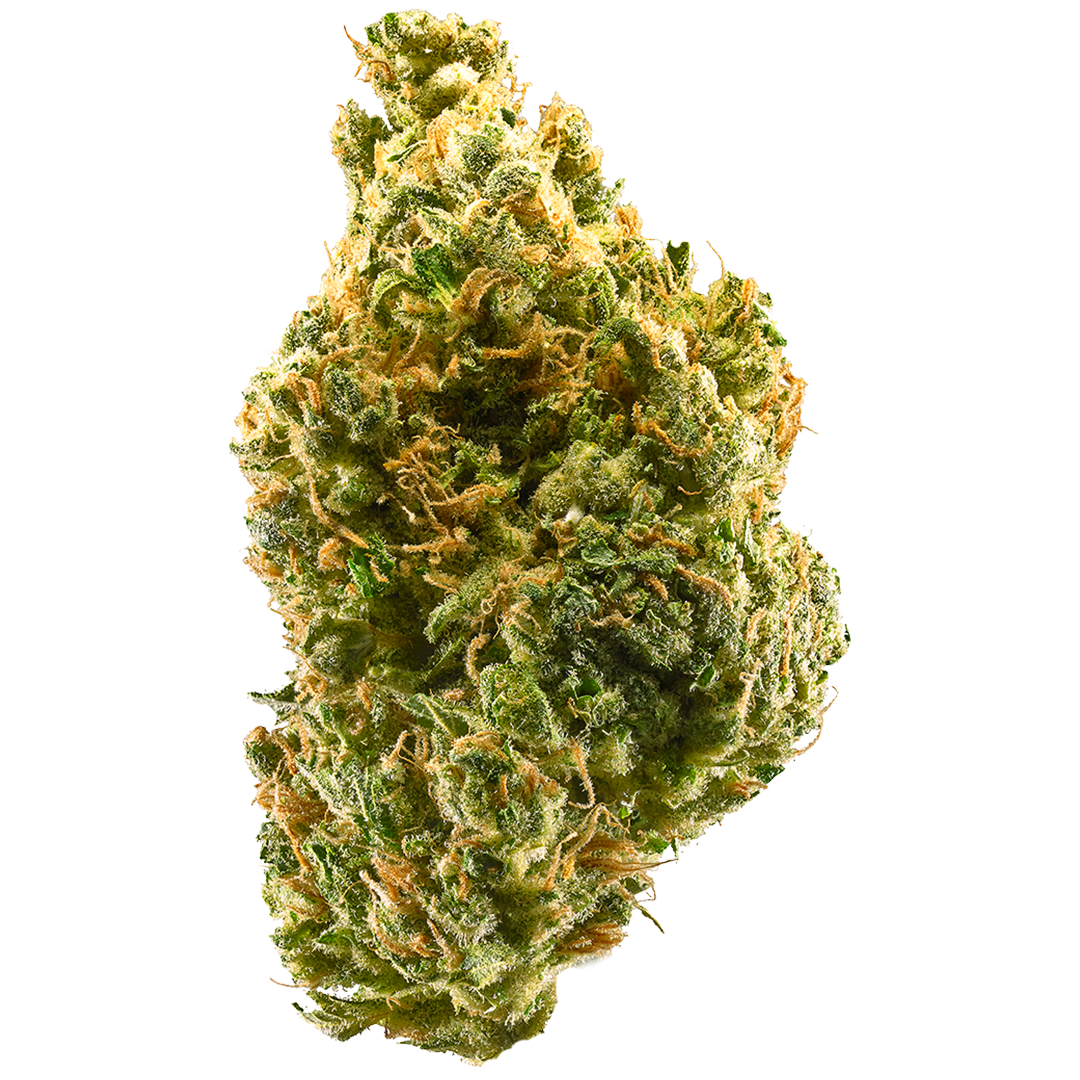Tangie
The Tangie strain, a popular sativa-dominant hybrid developed by DNA Genetics, is a cross between California Orange and Skunk #1. Named for its citrusy aroma and resemblance to Tangerine Dream, Tangie is favored for recreational use due to its potent THC content, reaching around 20%.
Low in CBD, Tangie offers a well-balanced euphoric and relaxing effect, making it beneficial for managing anxiety, depression, and stress. This award-winning strain has gained recognition at events like the Cannabis Cup, where it secured first place.
Known for its uplifting and fresh citrus scent, Tangie has contributed to the creation of other hybrids like Sour Tangie and 24K Gold. Widely distributed in regions like the West Coast, Colorado, and Arizona, Tangie thrives in climates optimal for growth.
Cannabinoids
THC: 17%-22%
CBD: 1%
Strain Types
Indica: 30%
Sativa: 70%
Terpenes
Beta-Caryophyllene
Limonene
Myrcene
Phellandrene
Pinene
Flavonoids
While rarely tested for in cannabis plants, Tangie's flavor profile suggests the presence of cannflavins, naringin, quercetin, and kaempferol.
Tangie has been reported to have the following effects:
Cerebral
Creativity
Elevated Mood
Energizing
Focused
Relaxing
The following adverse effects have also been reported:
Dry Eyes
Dry Mouth
Paranoia
Determining the right dosage for any cannabis variety is challenging due to its complex botanical nature, comprising numerous active compounds that interact with and counteract each other. Individual variations in the endocannabinoid system (ECS) further complicate dosing, with the same strain affecting individuals differently.
For optimal dosing of specific cannabis chemotypes, it is advisable to assess cannabinoid and terpene contents, prioritizing safety. Generally, strains rich in myrcene lean towards sedation, while those with higher limonene and terpinolene levels tend to be more stimulating.
Inhalation users, particularly beginners, should start with a few puffs, waiting 10-20 minutes before redosing. In contrast, consumers of decarboxylated cannabis edibles should proceed cautiously with a starting dose of 2.5 to 5.0 mg THC, increasing in 2.5 mg increments if necessary. Edibles are significantly more potent than inhaled cannabis, warranting a slow and low approach to avoid overconsumption.
Cultivating this medical marijuana strain demands extra attention and care, making it better suited for growers with intermediate to advanced experience. With typical sativa traits, the plant exhibits tall and slender growth. Adorned with tiny orange hairs and abundant trichomes, both the plant and its buds boast a vibrant, eye-catching hue.
Height
With its prevalent sativa genetics, the Tangie strain can reach heights of up to 6 feet, making it less suitable for indoor cultivation. Encouraging lateral growth, trimming the plant's top is beneficial irrespective of the growing environment. Due to its lengthy, slender branches, extra support may be necessary, particularly during rain, to prevent them from becoming fragile and at risk of breakage.
Humidity and Temperature
Optimal cultivation for this plant occurs outdoors in soil, as opposed to indoor or hydroponic settings. Thriving in warm, dry climates, Tangie is vulnerable to mold and potential damage in wet conditions. The preferred temperature range for this strain is between 70-85 degrees Fahrenheit, and it flourishes in relative humidities ranging from 40% to 70%.
Flowering
The Tangie strain typically undergoes flowering for a duration of nine to 10 weeks. Harvesting is typically in October, though it may occur a few weeks earlier based on specific growing conditions. Outdoor cultivation yields approximately 500 grams of buds per plant, while indoor cultivation may result in a slightly lower harvest.
FAQ’s
-
The Tangie strain stands out with its distinctive citrusy aroma, a result of its lineage from California Orange and Skunk #1. Its sativa-dominant hybrid nature, coupled with high THC content, sets it apart, offering a balanced euphoric and relaxing experience.
-
Beginners inhaling Tangie should start with a few puffs, waiting 10-20 minutes before considering redosing. For those consuming decarboxylated cannabis edibles, a slow and low approach is recommended, beginning with an initial dose of 2.5 to 5.0 mg THC and adjusting incrementally if needed due to the higher potency of edibles.
-
Tangie thrives when grown outdoors in soil, particularly in warm, dry climates. Its sativa genetics lead to a height of up to 6 feet, making it less suitable for indoor cultivation. Growers should be cautious of wet conditions, as Tangie is susceptible to mold, and providing additional support for its slender branches is advisable, especially during rain.




